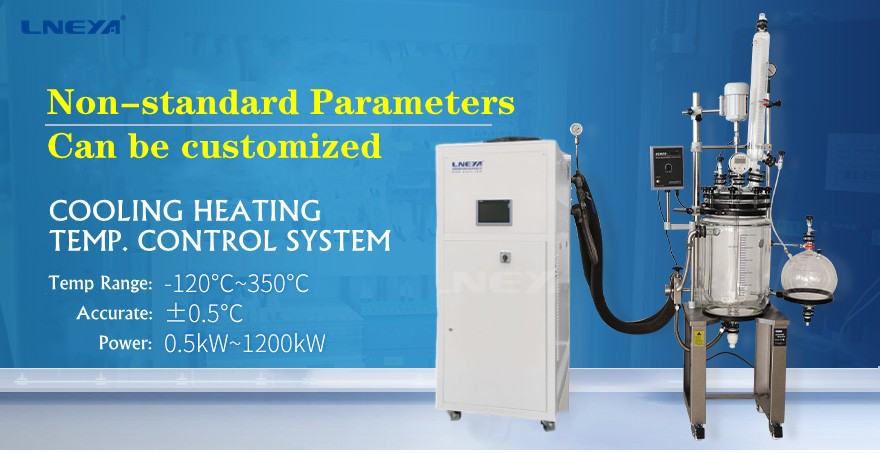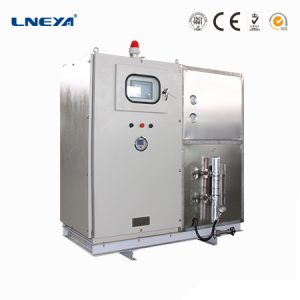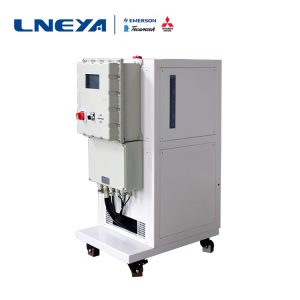Temperature control instructions for stainless steel reactors and glass reactors

Reactor is a kind of reaction equipment in industrial production. It generally needs to be refrigerated or heated. Whether the temperature is suitable or not directly affects its reaction effect. Therefore, if conditions permit, it is generally equipped with a reactor temperature control device. The temperature control device of the reaction kettle uses the conversion of heat conduction oil to heat the material to be heated. Inferior heat conduction oil has a short service life and is prone to scaling. Impurities will decompose under high temperature conditions, and the temperature cannot rise. There is water vapor It will cause more fuel injection. Generally, it is advisable to control the temperature of the reaction solution within 30-300°C for the electric heating reactor. Furthermore, the double-layer glass reactor can choose the corresponding low-temperature refrigeration cycle system for refrigeration, and the low temperature can reach -120°C. Heating can choose water vapor, hot water, heat transfer oil and other heat carriers, and the high temperature can reach 300 °C. Another example is that the temperature of the enamel reaction kettle is 200°C, so the temperature of the material in the kettle is not allowed to exceed this temperature.
Most temperature control applications involve stainless steel reactors, which are more durable, and glass reactors, which allow the user to observe the reaction process inside the reactor. There are many precautions to consider for the safety of glass reactors. Typically, a reactor has an internal cavity in which materials requiring temperature control are stored. The inner cavity is surrounded by a jacket that can be connected to heat-conducting oil, and the temperature control system is connected with the jacket of the reactor. In order to control the temperature of the reactor, the thermal oil is heated and cooled in the temperature control equipment. The temperature control system of the reactor continuously pumps the heat transfer oil into the jacket of the reactor through the circulation pump. Sudden temperature changes inside the reactor will be compensated by rapid heating and cooling of the temperature control equipment to achieve dynamic equilibrium.
Temperature control uses water circulation or oil circulation for temperature control, and the connecting equipment must have flow channels and interlayers. In industry, wherever temperature is required, temperature control is required. Our LNEYA cooling and heating temperature control system can basically be used for temperature control in the above industrial processes. The temperature is from -120~350℃. Plate heat exchangers and pipeline heaters are used to increase the temperature control rate, high-efficiency production stability and repeatable results, providing dynamic constant temperature control of cold source and heat source, fully enclosed system, reducing the demand for heat transfer fluid and increasing the heat of the system utilization rate.
Verwandte Empfehlungen
-
Vocs equipment industry heat exchanger type description
1601Every accessory in the vocs device has its function, so every accessory in the vocs device can't be less. So what is the heat exchanger in the Wuxi LNEYA vocs device? What are the main types? Tank heat exchanger: Compared with the traditional heat...
Details anzeigen -
Do new energy vehicle motor tests require a chiller or heater?
1262New energy vehicle motor testing requires both a chiller and a heater, as motor testing covers a wide range of temperature conditions to ensure the performance and stability of the motor under different operating conditions. Chiller: In ...
Details anzeigen -
Sicherheitshinweise für die Verwendung von Hochtemperatur-Wärmeträgeröl
1623Um die Hochtemperatur-Umwälzpumpe effizienter zu betreiben, empfiehlt es sich, auf die Sicherheit und die Wahl des Wärmeleitöls zu achten. Worauf ist bei der Wahl des Wärmeleitöls für den Hochtemperaturkreislauf zu achten...
Details anzeigen -
Beschreibung der Ausfallleistung der Temperaturschockprüfkammer
1530Die Temperaturschock-Prüfkammer ist in verschiedenen großen Industriezweigen weit verbreitet. Wenn Benutzer kaufen, hoffen sie, dass ihre Temperatur Auswirkungen Prüfkammer kann für eine lange Zeit verwendet werden. Daher ist es notwendig, jeden Fehler des Temperaturschockprüfschranks zu...
Details anzeigen
 LNEYA Industriekühler Hersteller Lieferant
LNEYA Industriekühler Hersteller Lieferant













